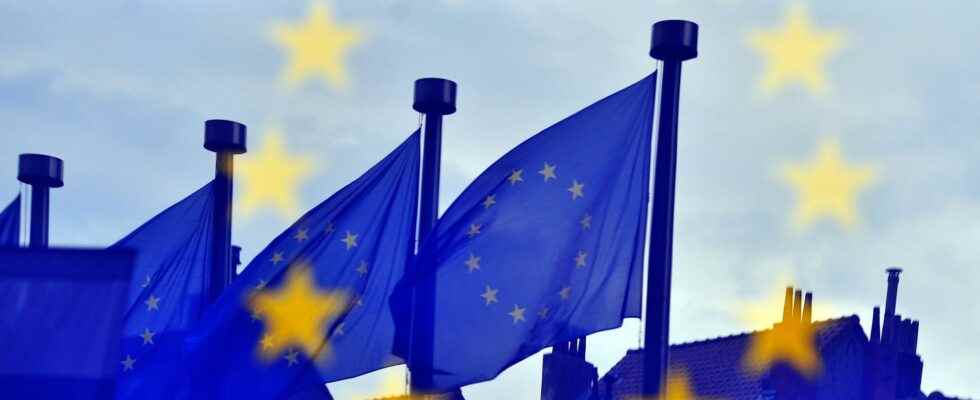A historic decision. And the term is not overused. On the night of Monday to Tuesday, the European Union endorsed the decision to create a carbon border adjustment mechanism (MACF). This text, which has been in the making for several years now at European level, is one of the pillars of the Green Deal and Fit for 55, two pieces of legislation that should enable Europe to reduce its greenhouse gas emissions by 55%. by 2030 and become carbon neutral by 2050. It provides for the creation by October 2023 of a “carbon tax” at the borders of the Old Continent, which will be imposed on products coming from third countries in a series well-defined sectors – cement, aluminium, fertilizers, power generation, iron and steel and hydrogen.
By 2030, the text should be extended to other sectors, the list of which will be defined by the European Commission. “The agreement reached last night is a new world first within the framework of the Green Deal. It is the concrete implementation of a French idea initiated more than 20 years ago by Jacques Chirac. For the first time, we are going to ensure fair treatment between our companies, which pay a carbon price in Europe, and their foreign competitors, who do not”, explains Pascal Canfin, President of the Environment Committee of the European Parliament and member of the group Renew. This is a first outcome, even if this text will also depend on the reform of the EU carbon market, also under discussion and which could be completed at the end of the week.
The road has been long. If Jacques Chirac launched the discussions, Nicolas Sarkozy then François Hollande failed to obtain a European agreement around this subject. And for good reason, many industrial exporters, particularly in Germany, feared reprisals from European trading partners. Emmanuel Macron, he made it a highlight of the last French Presidency of the Council of the European Union. Also, the magnitude of this agreement should not be minimized. It obviously responds to climate issues, because tomorrow will force exporters to the Old Continent to decarbonize their industrial apparatus as much as possible, in order to continue to sell at a competitive price in an area which nevertheless represents 14% of world imports of goods.
Ensuring fairness
It will also allow European companies in the sectors concerned by the carbon border adjustment mechanism to benefit from the famous “level playing field”, according to Brussels jargon, because today they are paying a carbon price that manufacturers in China, Turkey or even the United States do not pay, or very little. A measure of competitiveness, which aims to avoid “ecological dumping”, and undoubtedly takes on even more meaning today, at a time when soaring energy prices on the Old Continent are giving rise to inclinations relocations by certain manufacturers.
This protectionism is essential. It is also a message sent to the United States or China, whose national preference granted to their companies is well established. To be truly effective, this MACF will obviously have to be accompanied by an ambitious reform of the European electricity market in order to stimulate long-term investments in new low-carbon electricity production capacities, as well as an overall acceleration of investments in energy efficiency, renewables, and nuclear power, to globally lower industrial energy bills. Which is now at the center of their concern.
Manage legal and diplomatic landing
It will then be necessary to manage the landing on the legal and diplomatic level. In recent months, European Union lawyers have certainly shown unfailing confidence in their ability to have the text validated on the legal level and in particular with the World Trade Organization, thanks, among other things, to the rise gradually taking charge of the text, which would at the same time see the emission quotas granted to major EU polluters reduced, to avoid double protection. Diplomatically, the establishment of text is viewed with suspicion across the Atlantic and in Asia. However, Europe is cruelly dependent on one for its liquefied natural gas, and the other for the metals needed to achieve the energy transition. It will be necessary to be skilful and know how to skillfully handle the carrot and the stick to avoid reprisals. Is this why Europe has opted for a simplified mechanism initially, which will be based on an obligation to declare without control. “The goal is to collect data”, explains this Tuesday morning the European Union in a press release.
Finally, the full and complete implementation of the CBAM around 2025-2026 will have to be accompanied by efficient instruments of measures and sanctions. Knowing precisely the carbon intensity of raw or manufactured products coming from China, for example, and imposing the right tax on them, is a challenge that is anything but insignificant. A few months ago, Bloomberg noted in a survey that the Chinese carbon market was faced with significant fraud in the calculation of CO2 emissions and that there was therefore mistrust as to its ability to provide reliable data to outside its borders. Far from stopping at the agreement signed overnight from Monday to Tuesday, the implementation of the carbon border adjustment is perhaps entering its most complicated phase.
